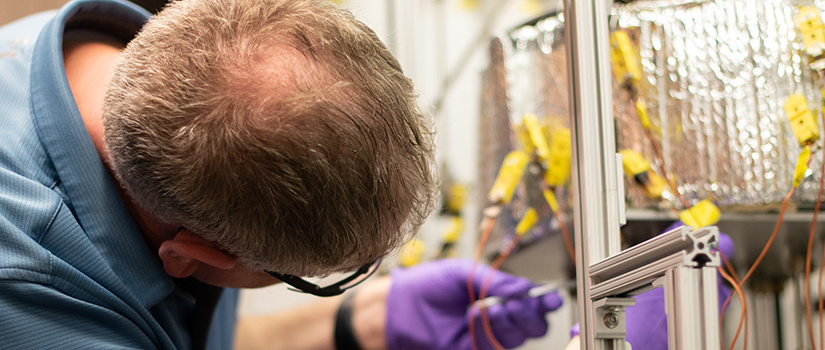The SmartState Center for Strategic Approaches to the Generation of Electricity works with local companies to make the energy sector more sustainable
Even as laws and priorities shift, the need for sustainable and affordable energy remains. The University of South Carolina’s SmartState Center for Strategic Approaches to the Generation of Electricity (SAGE) is solving pressing issues facing the power industry with input from local companies and support from home-grown student researchers.
Since its inception in 2007, the center’s mission has been to integrate existing legacy systems with new technologies, an approach that could kick-off lasting, immediate change in the nation’s power sector. And with close ties to South Carolina’s power industry via its board of directors, SAGE is uniquely positioned to bring these new technologies to market.
“SAGE is a little different from a lot of other SmartState centers because we actually have a board of directors: people that work at Santee Cooper and at the power cooperatives here in South Carolina,” SAGE Chair and Chemical Engineering Professor Jochen Lauterbach says. “So, I have a little bit of a closer connection to what the power sector is really doing.”
When Lauterbach took the helm of SAGE in 2010, the energy sector had begun to shift its focus away from fossil fuels like coal to renewables like wind, solar and biomass. SAGE followed suit, moving away from its initial research on clean coal and instead focusing on how these renewables could fit into the existing power generation system.
Finding new solutions using old technologies
Collaborating with Santee Cooper, SAGE is currently using biomass waste from a logging company in the Upstate. Lauterbach says that like coal, the energy in biomass is generated from carbon. His vision is for existing coal power plants to use this type of biomass as an alternative fuel.
“Instead of digging up the carbon from the ground, we’re basically reusing a carbon that's already been dug up and gone into the tree,” he says. “So, we're reusing a closed carbon or a semi-closed carbon cycle, but we're also making other things with this biomass like renewable plastic materials.”
Storing energy from renewables
Storing energy in the grid is one of the biggest issues we face with renewables. SAGE is tackling this by focusing on ammonia, which can be generated using renewable energy like wind or solar, safely stored, and converted back into a fuel by breaking it down into hydrogen.
“Part of our research is finding ways to make ammonia in a more sustainable way,” Lauterbach says. “The other part is once you have the ammonia, you can't feed it directly into a fuel cell. You have to crack it into hydrogen and nitrogen. We have patents filed for catalysts to do that, and that's actually a technology that is becoming mature now and is starting to get transferred into the marketplace.”
Finding success
For SAGE, success is twofold. Lauterbach wants to train his students to become leaders in the field and he also wants to see their technologies scaled up and brought to the marketplace where it can make a difference.
“There's a huge amount of interest in what we’re doing right now,” Lauterbach says. “There’s almost not a week that goes by where I don't get an email from someone that wants to get into this or wants to collaborate with us.”
With 27 Ph.D. students since 2010, many staying local after graduation, and an increasing number of partnerships on the horizon, Lauterbach knows that SAGE is on the path to making a cleaner, greener power future.
